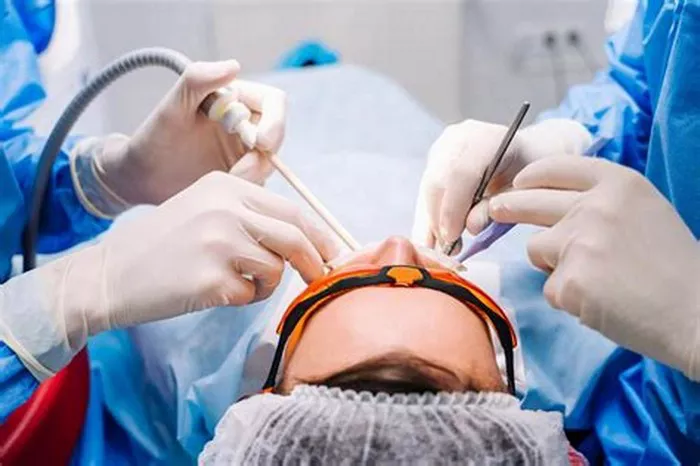Laser eye surgery, including procedures like LASIK, PRK, and SMILE, has become a popular option for those looking to correct vision problems and reduce dependence on glasses or contact lenses. However, the question of safety remains a significant concern for many potential patients. This article provides a thorough examination of the safety of laser eye surgery, detailing the procedures, potential risks, benefits, and considerations for those thinking about undergoing the treatment.
Introduction to Laser Eye Surgery
Laser eye surgery involves using laser technology to reshape the cornea, the clear front part of the eye, to improve vision. The primary types of laser eye surgery are:
LASIK (Laser-Assisted In Situ Keratomileusis)
PRK (Photorefractive Keratectomy)
SMILE (Small Incision Lenticule Extraction)
Each procedure has its own method of reshaping the cornea and varying levels of invasiveness and recovery time.
Understanding LASIK
What is LASIK?
LASIK is one of the most commonly performed laser eye surgeries. It involves creating a thin flap in the cornea with a microkeratome or femtosecond laser, lifting the flap, and then using an excimer laser to reshape the underlying corneal tissue.
Benefits of LASIK
Quick Recovery: Most patients experience improved vision within 24 hours.
Minimal Pain: The procedure is generally pain-free.
Long-Term Results: LASIK can provide long-lasting vision correction.
Risks and Complications
While LASIK is generally safe, some risks include:
Dry Eyes: Temporary dryness or discomfort in the eyes.
Visual Disturbances: Issues such as halos, glare, or double vision.
Infection or Inflammation: Though rare, these complications can occur.
Understanding PRK
What is PRK?
PRK is an alternative to LASIK where the outer layer of the cornea (epithelium) is removed to expose the corneal tissue underneath. An excimer laser is then used to reshape the cornea.
Benefits of PRK
No Corneal Flap: Eliminates the risk of flap-related complications.
Suitable for Thin Corneas: Ideal for patients with thinner corneas.
Effective Results: Provides similar vision correction outcomes as LASIK.
Risks and Complications
PRK comes with its own set of risks:
Longer Recovery Time: Vision improvement may take several weeks.
Discomfort: Postoperative discomfort can be more pronounced than with LASIK.
Risk of Haze: Some patients may develop corneal haze, which can affect vision.
See Also: 4 Best Laser Eye Surgeries
Understanding SMILE
What is SMILE?
SMILE is a newer laser eye surgery technique where a small incision is made in the cornea, and a lenticule (a small piece of corneal tissue) is removed to correct vision.
Benefits of SMILE
Minimally Invasive: No need for a corneal flap or surface removal.
Reduced Risk of Dry Eye: Less disruption to corneal nerves.
Quick Recovery: Similar to LASIK, with fast visual recovery.
Risks and Complications
SMILE has a lower risk profile but is not without concerns:
Limited for Some Prescriptions: Not suitable for all types of vision correction.
Potential for Complications: Although rare, complications can still arise.
Factors Influencing Safety
Patient Selection
Not everyone is a candidate for laser eye surgery. Factors such as age, eye health, prescription stability, and overall health can impact suitability. Comprehensive preoperative assessments are crucial for identifying ideal candidates and minimizing risks.
Technology and Expertise
The safety of laser eye surgery is influenced by the technology used and the expertise of the surgeon. Advances in technology have improved outcomes and reduced risks, but the experience and skill of the surgeon remain critical factors.
Postoperative Care
Proper postoperative care is essential for achieving optimal results and minimizing complications. Following all postoperative instructions and attending follow-up appointments can greatly influence the safety and success of the surgery.
Long-Term Safety and Efficacy
Durability of Results
Most patients experience long-term improvements in vision. However, some may require additional procedures or experience changes in vision over time due to age or other factors.
Potential for Revision Surgery
In some cases, patients may require revision surgery to achieve the desired vision correction or address issues that arise after the initial procedure.
Research and Advances
Ongoing research and technological advancements continue to enhance the safety and effectiveness of laser eye surgery, addressing previous limitations and improving patient outcomes.
Conclusion
Laser eye surgery has a strong safety record and offers significant benefits for many individuals seeking vision correction. However, like any medical procedure, it carries potential risks and complications. A thorough understanding of the different types of laser eye surgery, careful patient selection, advanced technology, and proper postoperative care are all crucial components in ensuring the safety and effectiveness of the treatment.
For those considering laser eye surgery, it is essential to consult with a qualified eye care professional to determine the most suitable option and to discuss any concerns about safety and potential outcomes.
Related topics:

